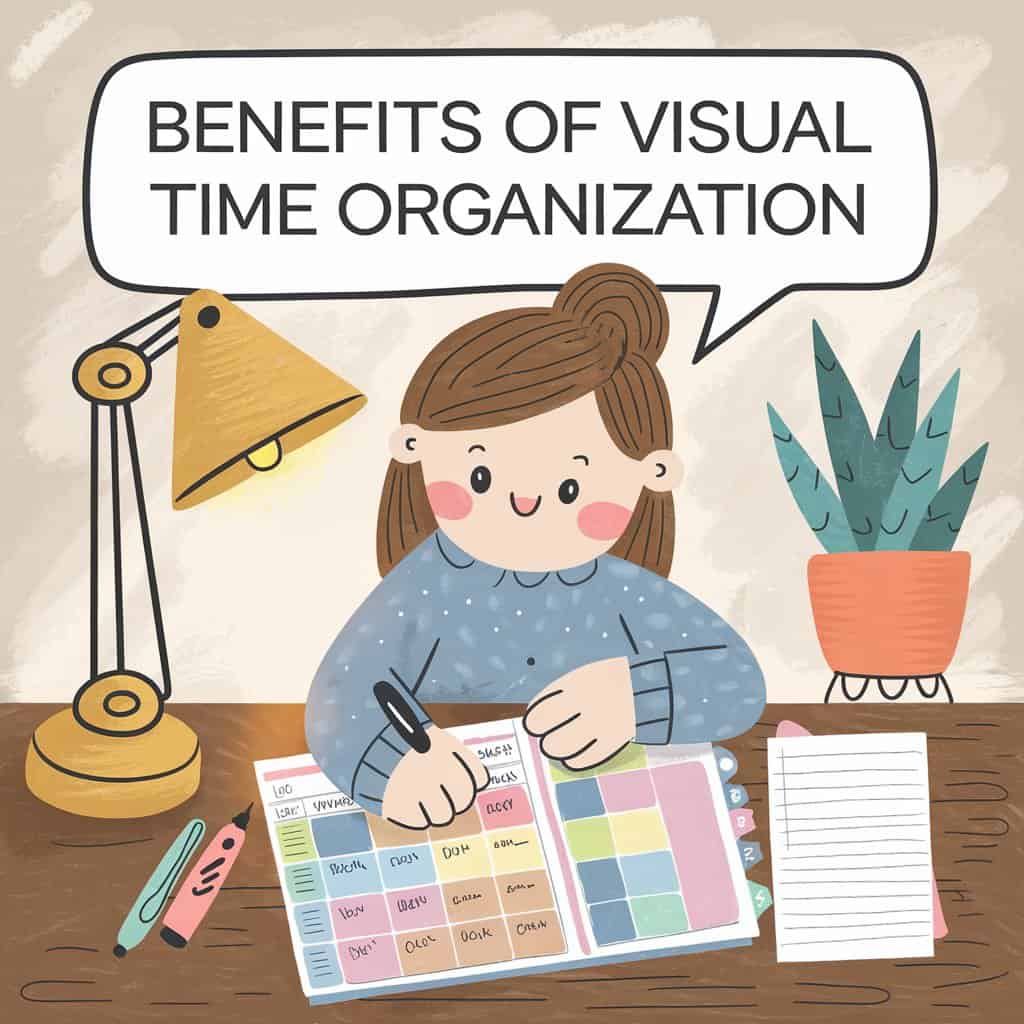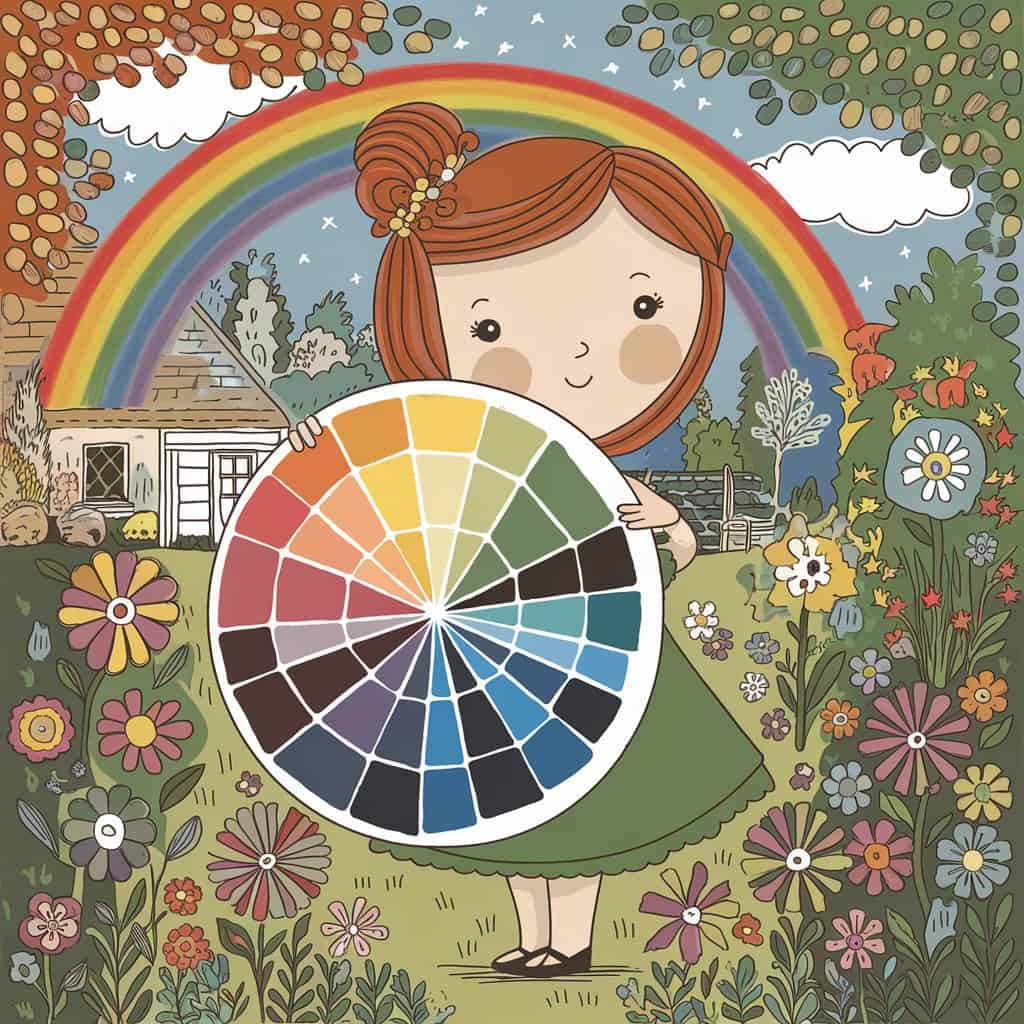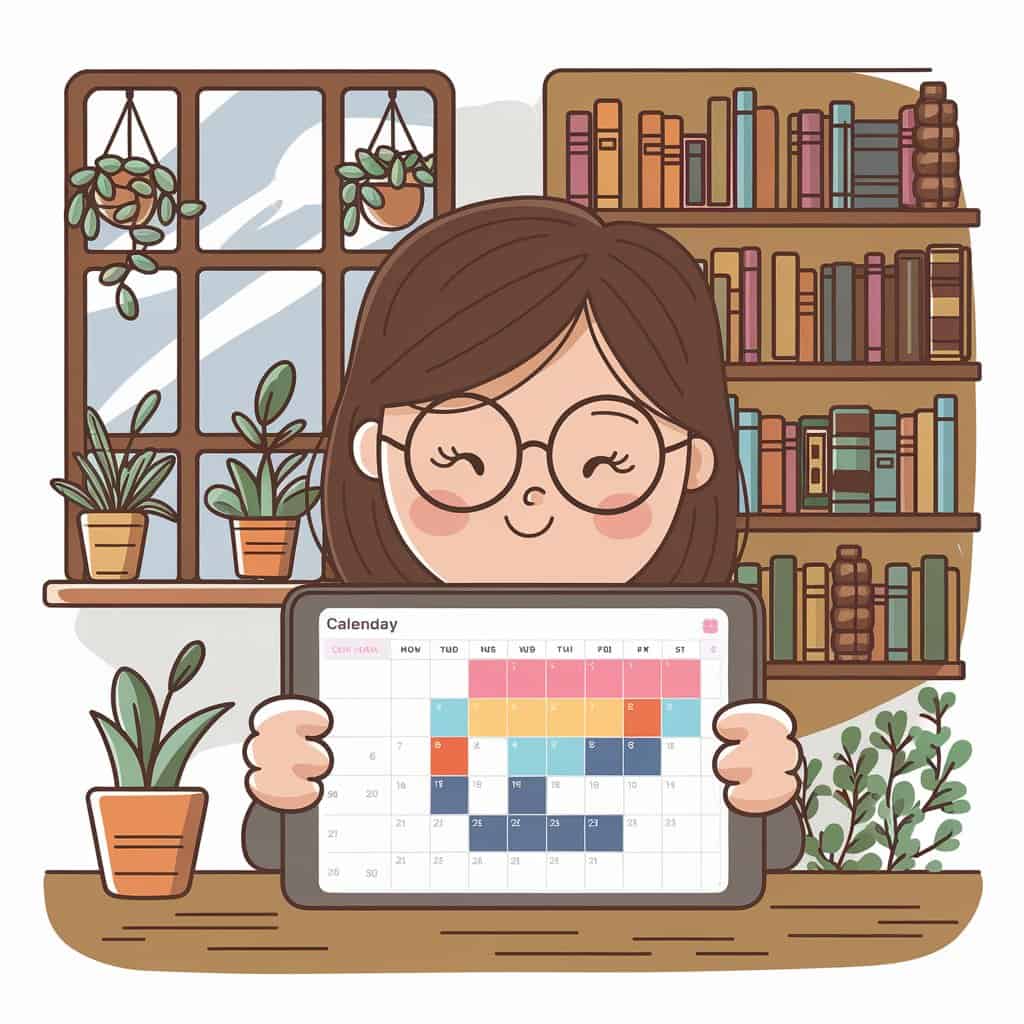As someone who's struggled with time management, I've discovered the power of color-coding in organizing my schedule. It's not just about making your planner pretty – it's a game-changer for productivity.

I'll share my personal journey with color-coding, from using Google Calendar to create a visually appealing and functional system. We'll explore how assigning specific colors to different tasks and events can help you quickly scan your schedule, identify meetings, and balance your time across various projects and personal commitments.
I'll also touch on the psychology behind color association and how it can boost your efficiency. Let's dive into this colorful world of time management together!
Understanding Color-Coding Fundamentals for Time Management
Color-coding isn't just about aesthetics – it's a powerful tool for enhancing visual organization and clarity in time management. By assigning specific colors to various tasks and appointments, you can create a more organized and easily navigable planning system. This approach can improve focus, reduce stress, and help you better understand the flow of your day.
Benefits of Visual Time Organization
When you use color psychology to categorize your activities, it becomes easier to identify patterns, prioritize tasks, and maintain a balanced schedule. The visual nature of color-coding makes it simpler to scan your calendar and quickly understand what's happening at a glance. This can lead to increased productivity and a greater sense of control over your time management techniques.

Psychology Behind Color Association
Our brains are hardwired to respond to color in unique ways. Certain hues can evoke specific emotions, memories, and cognitive associations. By strategically selecting colors for your calendar, you can tap into these psychological cues to enhance your time management. For example, using calming blues for meetings and vibrant yellows for focused work sessions can help you mentally prepare for the task at hand.
Basic Principles of Color Selection
- Create a balanced palette: Choose a limited number of colors that complement each other and allow for clear differentiation between categories.
- Establish consistent color-coding: Use the same colors to represent the same types of activities across your calendar and planning system.
- Leverage personal associations: Select colors that hold personal meaning or significance to you, as this can aid in memory and recall.
By mastering the fundamentals of color-coding, you can unlock the power of visual organization and leverage color psychology to streamline your time management techniques. The key is finding a system that aligns with your unique needs and preferences, allowing you to stay on top of your schedule with ease.
Time Management Aesthetic: Creating Your Perfect System
Crafting a personalized planning system that aligns with your unique time management aesthetic is a journey of self-discovery. By carefully selecting a color palette that resonates with you, you can elevate your daily tasks and priorities into a visually appealing, functional system.
Start by considering which colors inspire you, evoke a sense of calm, or simply make you feel motivated. Assign these colors to different categories in your life, such as work, personal time, exercise, and social activities. This color-coding technique can help you quickly identify and prioritize your tasks at a glance.

Drawing from my own experience, my color-coding system has evolved over time. I use green for work-related items, pink for personal time, and yellow for administrative tasks. I also use colors to “code” my blog work, pink for this blog, green for another and teal for the last one! The key is to find a balance between aesthetics and functionality, creating a visual hierarchy that highlights your most important commitments.
Remember, your time management aesthetic should be a reflection of your unique personality and priorities. Don't be afraid to experiment and adjust your system as your needs change. Flexibility is the key to maintaining an effective and visually appealing time management system.
Whether you prefer digital calendars, physical planners, or a hybrid approach, incorporating color-coding techniques can transform your time management routine into a visually captivating and highly functional system. The journey to finding your perfect time management aesthetic is a personal one, but the benefits of a well-organized, visually appealing system can be truly transformative.
Digital and Physical Color-Coding Tools
In the realm of time management, both digital and physical planning tools can be invaluable when it comes to effective color-coding. From vibrant digital calendars to classic physical planners, the right tools can transform the way you organize your schedule and stay on top of your tasks.
Digital Calendar Applications
Popular digital calendar apps like Google Calendar offer robust color-coding features that allow you to assign specific hues to different events, appointments, and tasks. This visual approach can help you quickly identify important deadlines, differentiate between work and personal commitments, and maintain a clear overview of your daily activities.

By leveraging the power of digital planning tools, you can seamlessly sync your color-coded calendar across devices, ensuring your organizational system is always at your fingertips.
Physical Planners and Supplies
For those who prefer the tactile experience of physical planners, a wide range of color-coding options are available. Invest in a planner with designated sections for different aspects of your life, and utilize vibrant color-coding supplies such as highlighters, pens, and sticky notes to create a customized visual system. This hands-on approach can aid in memory retention and provide a sense of control over your schedule.
Hybrid System Integration
Recognizing the benefits of both digital and physical planning tools, many individuals have embraced a hybrid planning system that combines the best of both worlds. By syncing your color-coded digital calendar with your physical planner, you can enjoy the convenience of technology while maintaining the personalized touch of a handwritten, color-coded system.
This seamless integration can help you stay organized and focused, regardless of whether you're on the go or prefer a more tangible planning experience.
Practical Color-Coding Strategies for Different Activities
As a former student and now a professional, I've learned the power of color-coding to streamline my life. Whether you're a student managing your studies or a working adult juggling work and personal responsibilities, color-coding can be a game-changer. Let's explore how to apply this versatile technique to various aspects of your life.

Color-Coding for Students: For students, color-coding can be a lifesaver when it comes to organizing study schedules, assignments, and exam preparation. Assign specific colors to different subjects, with green for math, blue for literature, and yellow for science, for example. This visual system helps you quickly identify key tasks and prioritize your workload.
Color-Coding in the Workplace: In the professional world, I've found color-coding to be invaluable for managing projects, meetings, and deadlines. By using distinct colors to represent different clients, team members, or task categories, I can easily track progress, identify conflicts, and ensure nothing falls through the cracks.
Personal Time Management: Color-coding can also be a powerful tool for maintaining a healthy work-life balance. Assign colors to track habits, plan social activities, and block off personal time. This visual system helps me prioritize self-care and prevent burnout, ensuring I don't neglect the important things in life.
The key to successful color-coding is finding a system that works for you. Start with a few core colors and gradually expand as needed. Consider using the Mildliner Highlighter, which offers a versatile range of pastel hues perfect for color-coding. Experiment with different approaches until you discover the perfect balance that boosts your productivity and brings joy to your daily routine.
Conclusion
Reflecting on my journey with color-coded time management, I can't emphasize enough how it's transformed my productivity and reduced stress. We've explored the fundamentals of color-coding, created personalized systems, and discussed both digital and physical tools. Remember, the key is to find a system that works for you and be open to adjusting it as needed.
I encourage you to start small, perhaps by color-coding one aspect of your life, and gradually expand as you see the benefits. With consistent use, you'll likely find yourself more organized, focused, and in control of your time. By incorporating time management tips, leveraging the benefits of color-coding, and embracing these productivity enhancement strategies, you are well on your way to a more colorful and productive future!

 Tara’s “tell it like it is” personality combined with her 100 miles per hour presentations have earned her the title “The Queen of Marketing Ahhh’s” from her raving fans. Check out her marketing courses and products at her Etsy Store,
Tara’s “tell it like it is” personality combined with her 100 miles per hour presentations have earned her the title “The Queen of Marketing Ahhh’s” from her raving fans. Check out her marketing courses and products at her Etsy Store,